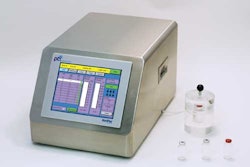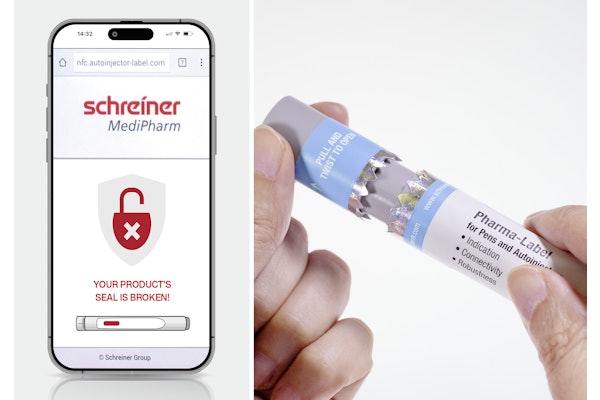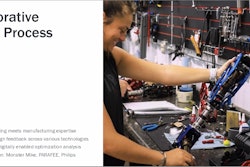The need for disposability significantly impacts the future design criteria for medical devices and packaging, materials management, practices in heathcare institutions, and—to a certain degree—procedures performed by healthcare providers. Companies that understand and embrace sustainability will have a significant competitive advantage in the marketplace.
U.S. hospitals produce more than three billion tons of waste each year; with roughly 15% classified as regulated medical waste (capable of spreading infectious disease). This volume continues to increase rapidly as hospitals struggle with a triple threat of challenges: cost containment; environmental impact; and protecting staff, patients, and the community at large from the spread of infectious diseases.
The industry developed single-use sterile medical devices in the 1940s in an effort to reduce patient infections. This spawned a multi-billion dollar industry that continues to grow at double-digit rates each year, adding significantly to the waste stream. The U.S. Congress enacted strict environmental regulations in the 1990s in response to the discovery of used syringes washed up on East Coast beaches due to improper waste management. These regulations, designed to help protect public safety, dramatically increased costs. Consequently, the entire healthcare supply chain—including manufacturers, distributors, and hospitals—needs to collaborate, jointly developing strategies that provide safe, effective, practical, and economical packaging solutions for medical products.
Reducing regulated medical wastes
Hospitals are significantly changing the way they manage both regulated (“red bag”) and non-regulated medical waste. In recent years, hospitals have begun to transition from the waste-to-energy (via on-site incineration) practices of the past, to technologies that disinfect waste prior to disposal in the municipal (landfill) waste stream, with some limited recycling efforts. Over the last decade, hospitals also made great strides in reducing the regulated waste stream (at $600-$800/ton) to the non-regulated waste stream (at $30-$40/ton).
In one example, in 2006, Ridgeview Medical Center in Waconia, MN, participated in a waste audit performed by its medical waste vendor. The vendor conducted appropriate training within four months. As a result of this training, the medical center succeeded in reducing regulated medical wastes by almost 30% in 2006, and by almost 25% in 2007.
Other well-documented programs instituted at Kaiser Permanente, Inova, University of Vermont Medical Center, and many other leading institutions have significantly reduced the overall waste stream, in some instances, by as much as the 30% achieved at Ridgeview. Some approaches used at these institutions focused on:
• Improved segregation of red bag and non-infectious waste. This was key to increased recycling of commodity materials, particularly plastics.
• Utilizing autoclaving technology to render potentially infectious waste safe, reducing the volume of red bag waste by as much as 40% in certain applications.
• Identifying appropriate opportunities to displace disposable medical products with reusable medical products. This is often accomplished via either on-site or contract sterilization of reusable instruments.
• Encouraging medical device manufacturers to proactively pursue environmental packaging initiatives with a focus on material reduction, recyclablility, and reusability, where applicable. Scientific modeling is key to driving these types of programs.
The degree of success ultimately achieved in controlling the infectious/regulated waste stream will determine the volumes of other waste streams. Legal decreases in infectious waste can subsequently increase both municipal solid waste and opportunities to segregate more waste materials for recycling. Both these options for waste management have been demonstrated to be safe and cost-effective approaches to managing the entire waste stream.
A critical mass of hospitals operating in different regulatory environments has made significant reductions in infectious waste to strongly suggest that any hospital in the country can reduce its regulated medical waste. Some hospitals that have closed their on-site incinerators have gone from nearly 100% red bag waste to less than 20% red bag waste in only a few years. Other facilities have dropped infectious waste rates well under the 15% standard through a commitment to ongoing staff training and new systems monitoring.
U.S. hospitals produce more than three billion tons of waste each year; with roughly 15% classified as regulated medical waste (capable of spreading infectious disease). This volume continues to increase rapidly as hospitals struggle with a triple threat of challenges: cost containment; environmental impact; and protecting staff, patients, and the community at large from the spread of infectious diseases.
The industry developed single-use sterile medical devices in the 1940s in an effort to reduce patient infections. This spawned a multi-billion dollar industry that continues to grow at double-digit rates each year, adding significantly to the waste stream. The U.S. Congress enacted strict environmental regulations in the 1990s in response to the discovery of used syringes washed up on East Coast beaches due to improper waste management. These regulations, designed to help protect public safety, dramatically increased costs. Consequently, the entire healthcare supply chain—including manufacturers, distributors, and hospitals—needs to collaborate, jointly developing strategies that provide safe, effective, practical, and economical packaging solutions for medical products.
Reducing regulated medical wastes
Hospitals are significantly changing the way they manage both regulated (“red bag”) and non-regulated medical waste. In recent years, hospitals have begun to transition from the waste-to-energy (via on-site incineration) practices of the past, to technologies that disinfect waste prior to disposal in the municipal (landfill) waste stream, with some limited recycling efforts. Over the last decade, hospitals also made great strides in reducing the regulated waste stream (at $600-$800/ton) to the non-regulated waste stream (at $30-$40/ton).
In one example, in 2006, Ridgeview Medical Center in Waconia, MN, participated in a waste audit performed by its medical waste vendor. The vendor conducted appropriate training within four months. As a result of this training, the medical center succeeded in reducing regulated medical wastes by almost 30% in 2006, and by almost 25% in 2007.
Other well-documented programs instituted at Kaiser Permanente, Inova, University of Vermont Medical Center, and many other leading institutions have significantly reduced the overall waste stream, in some instances, by as much as the 30% achieved at Ridgeview. Some approaches used at these institutions focused on:
• Improved segregation of red bag and non-infectious waste. This was key to increased recycling of commodity materials, particularly plastics.
• Utilizing autoclaving technology to render potentially infectious waste safe, reducing the volume of red bag waste by as much as 40% in certain applications.
• Identifying appropriate opportunities to displace disposable medical products with reusable medical products. This is often accomplished via either on-site or contract sterilization of reusable instruments.
• Encouraging medical device manufacturers to proactively pursue environmental packaging initiatives with a focus on material reduction, recyclablility, and reusability, where applicable. Scientific modeling is key to driving these types of programs.
The degree of success ultimately achieved in controlling the infectious/regulated waste stream will determine the volumes of other waste streams. Legal decreases in infectious waste can subsequently increase both municipal solid waste and opportunities to segregate more waste materials for recycling. Both these options for waste management have been demonstrated to be safe and cost-effective approaches to managing the entire waste stream.
A critical mass of hospitals operating in different regulatory environments has made significant reductions in infectious waste to strongly suggest that any hospital in the country can reduce its regulated medical waste. Some hospitals that have closed their on-site incinerators have gone from nearly 100% red bag waste to less than 20% red bag waste in only a few years. Other facilities have dropped infectious waste rates well under the 15% standard through a commitment to ongoing staff training and new systems monitoring.





















